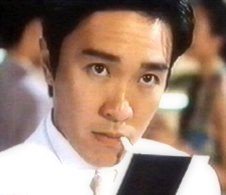Setting the record straight


THE Government has declassified several relevant confidential documents and extracts thereof to allow Malaysians to understand why it has reached the decision to abort the bridge project to replace the Johor Causeway. And in doing so, it has put the record straight on a string of allegations raised by former prime minister Tun Dr Mahathir Mohamad, namely that:
# THE Singapore government accepted Malaysia’s proposal to build a crooked bridge;
# THE bridge was not part of the package of outstanding bilateral issues;
# MALAYSIA is a “half-past-six country with no guts” by not going ahead with the crooked bridge project; and
# MALAYSIA put the issues of selling sand and allowing Singapore's air force to use its airspace on the negotiating table.
This is only the second time in recent history that information protected by the Official Secrets Act has been declassified and approved for public consumption – an indication of the Government’s seriousness in wanting the people who voted it into power to have the full facts, so that they can appreciate why the Government decided to abort the bridge project.
In the package of documents released are correspondences between Tun Dr Mahathir Mohamad and two of Singapore’s former prime ministers, Lee Kuan Yew and Goh Chok Tong.
Also made public are extracts of the record of the meeting between Prime Minister Datuk Seri Abdullah Ahmad Badawi and Goh in Kuala Lumpur in March last year.
The contents of these documents contain three key facts:
1. Discussions with Singapore on the airspace issue are not new and were not mooted by the current Government under Abdullah. Dr Mahathir himself included this issue as a trade-off and as part of the package of issues to be resolved with Singapore during negotiations from 1998 to 2002. This is evident from Dr Mahathir's letter to Lee on March 4, 2002. This same issue was raised by Goh during a meeting with Abdullah on March 1 last year. This nullifies the suggestion by Dr Mahathir that it was the present administration that offered Singaporean Air Force jets use of Malaysian airspace.
2. The sale of sand to Singapore was raised by the republic during a meeting between Abdullah and Goh on March 1 last year. This nullifies argument that the Government put the issue on sand on the negotiating table.
3. Comprehensive advice by the Attorney-General’s Chambers showed that Malaysia should not proceed to build a bridge unilaterally without complying with our legal obligations. In particular, Malaysia had obligations under the Johor-Singapore Water Agreements 1961 and 1962, the Wayleave Agreements and the Separation Agreement 1965.
The main obstacle was that the construction of the crooked bridge would involve the demolition of the Malaysian side of the Johor Causeway. The said demolition would directly affect the water pipeline located inside the Johor Causeway and water pipelines straddling the Johor Causeway in which the ownership thereof vests with the Public Utilities Board (PUB) of Singapore.
The Attorney-General’s Chambers also stated that under the 1961 and 1962 Johor-Singapore Water Agreements, “Malaysia is required to obtain approval of PUB in relation to the alteration of water pipelines as a result of the construction of a full straight bridge or a scenic halfbridge.”
The Johor-Singapore Water Agreements are guaranteed under the 1965 Separation Agreement.
The water pipelines located inside the Johor Causeway are governed by the 1961 Johor Singapore Water Agreement.
Therefore, the provisions of the Wayleave Agreements, which are applicable to the water pipelines straddling along the Johor Causeway, are not applicable to the water pipeline located inside the Johor Causeway.
These facts nullify the allegation that the water pipeline located inside the Johor Causeway could be relocated unilaterally after giving six months' notice to Singapore.
Taking into consideration these facts, the present Government had to make a firm decision to reject Singapore’s quid pro quo proposal on sand and airspace as it would have compromised Malaysia’s national sovereignty.
It had to make the political decision to abort the bridge project as this was consistent with the sentiment of Malaysians and the interest of Malaysia.
In conclusion, the issue boils down to one simple fact: Malaysia wanted the bridge, and Singapore did not want it.
The full straight bridge that was proposed by Malaysia would have been a symbol of friendship and would have benefited both countries.
Nevertheless, the responsibility for achieving this aim does not lie with Malaysia only.
Related Stories:
Government replies to allegations raised by Dr M
Government will not declassify all papers
At a glance








0 Comments:
Post a Comment
<< Home